Kei Ito: Sungazing
and
Tomiko Jones: Rattlesnake Lake
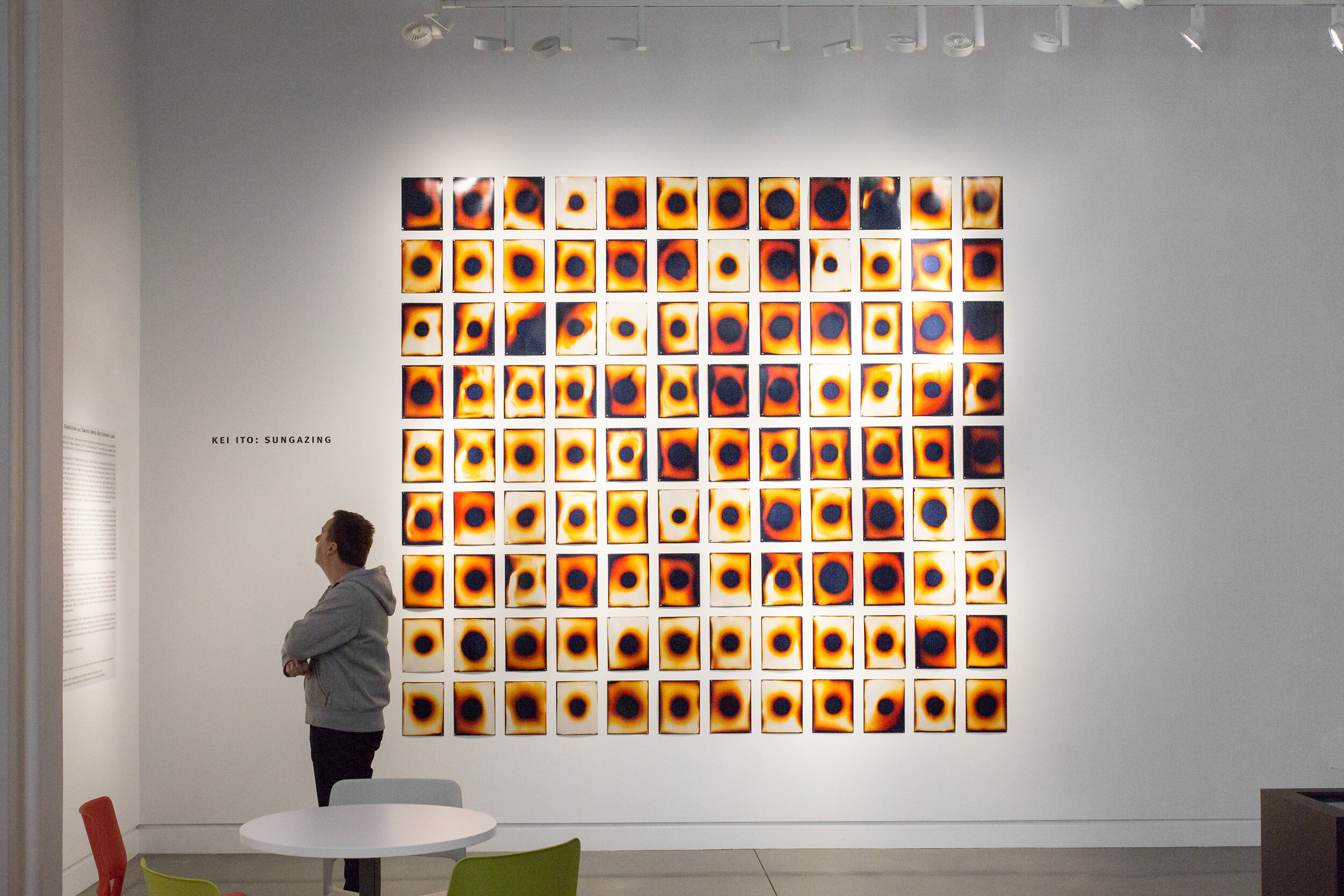
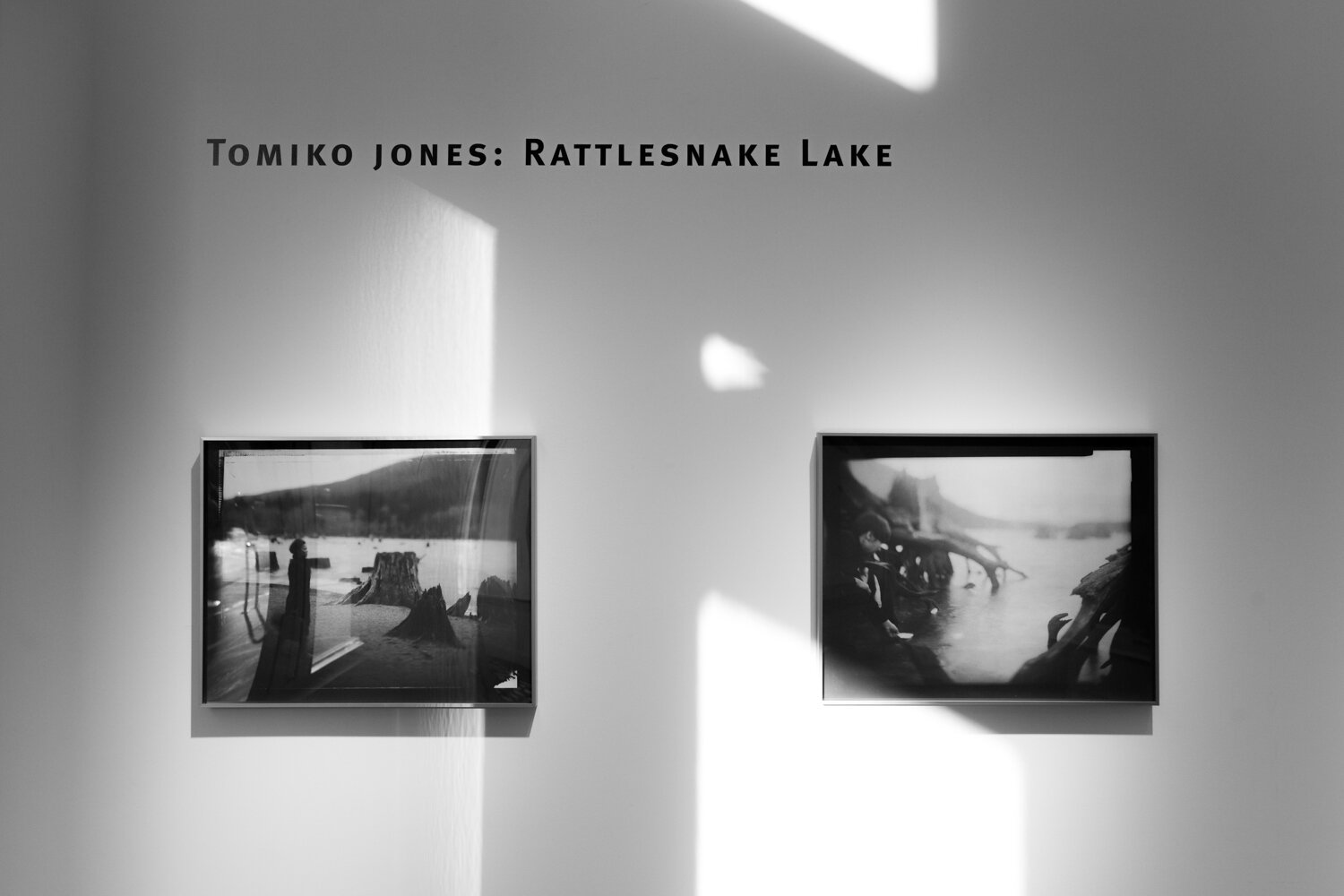

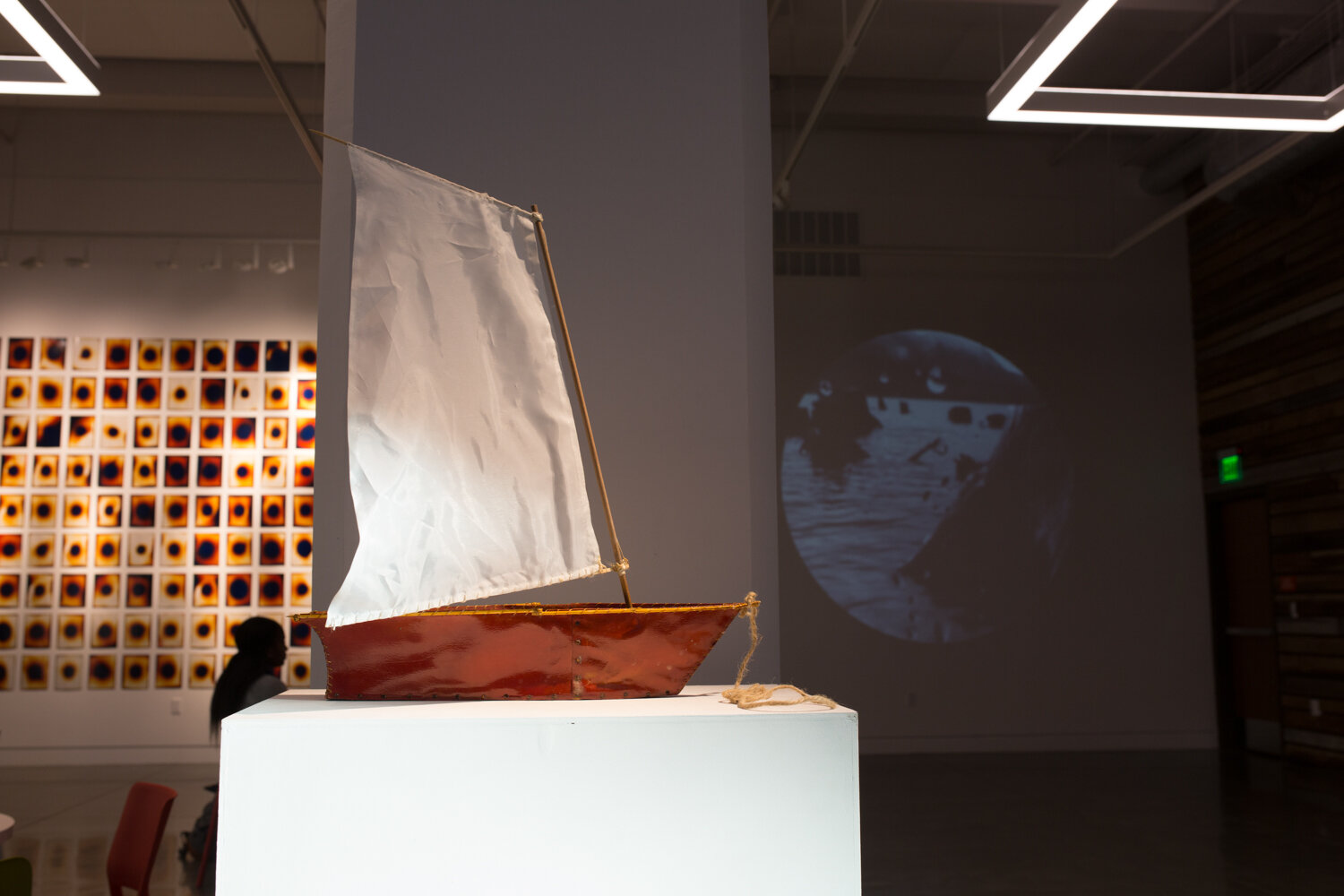
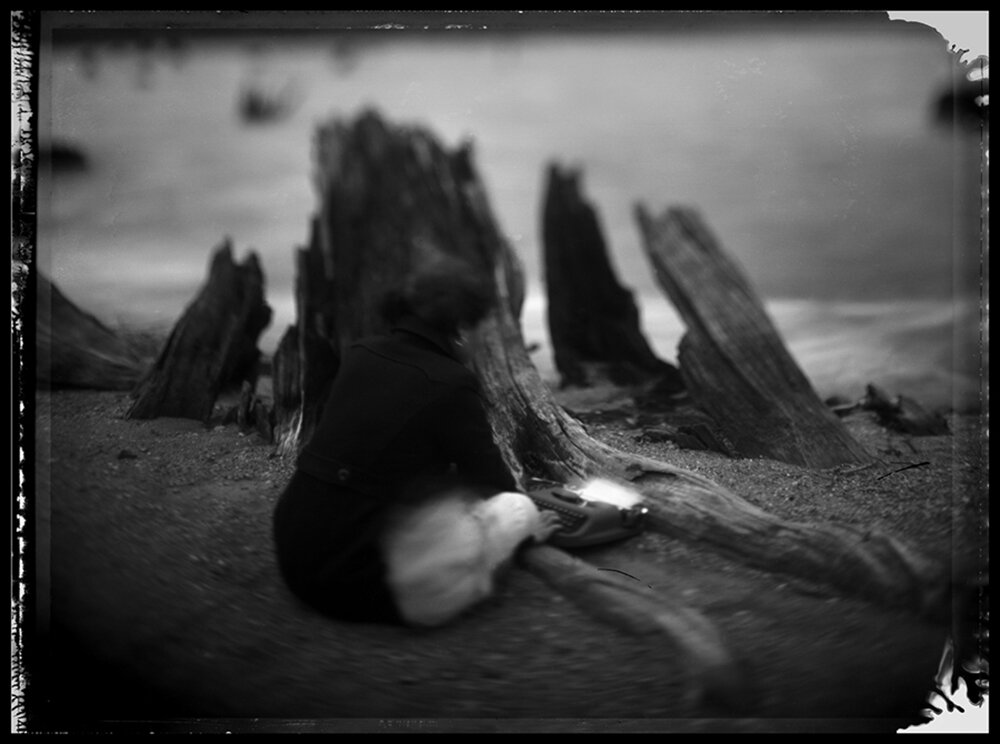
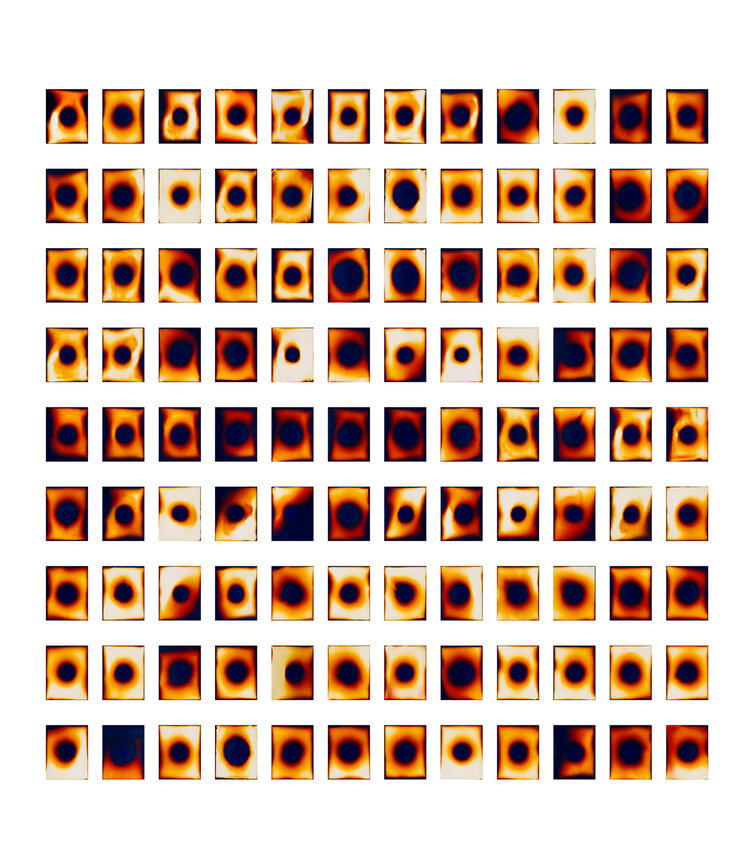
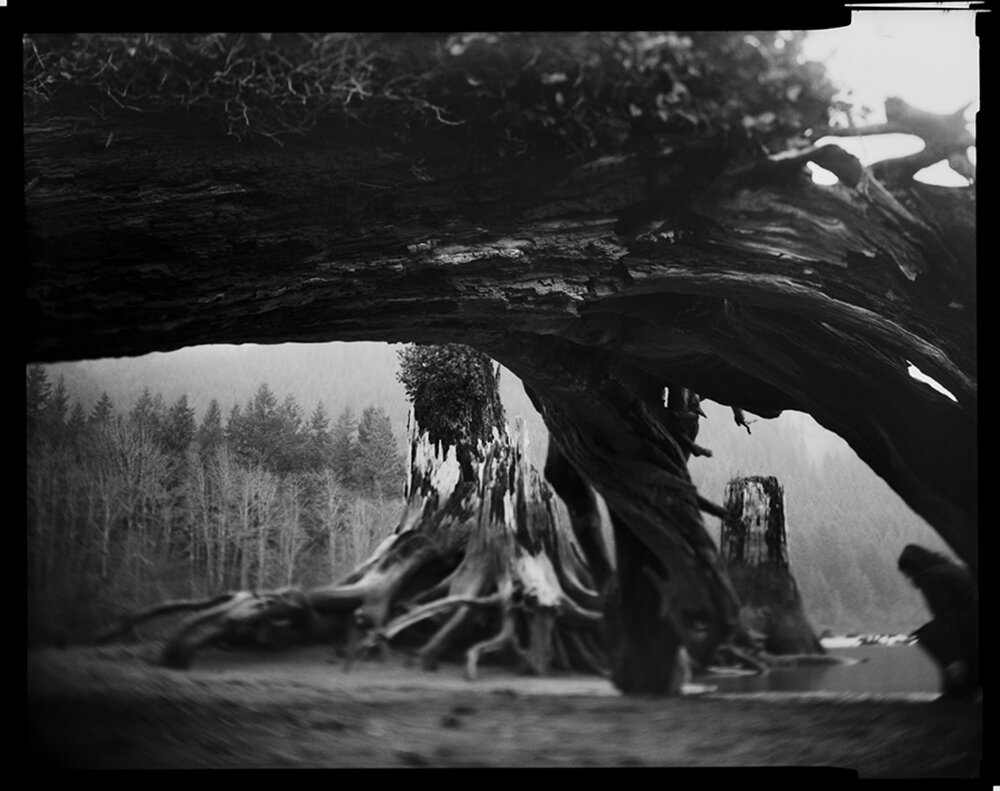
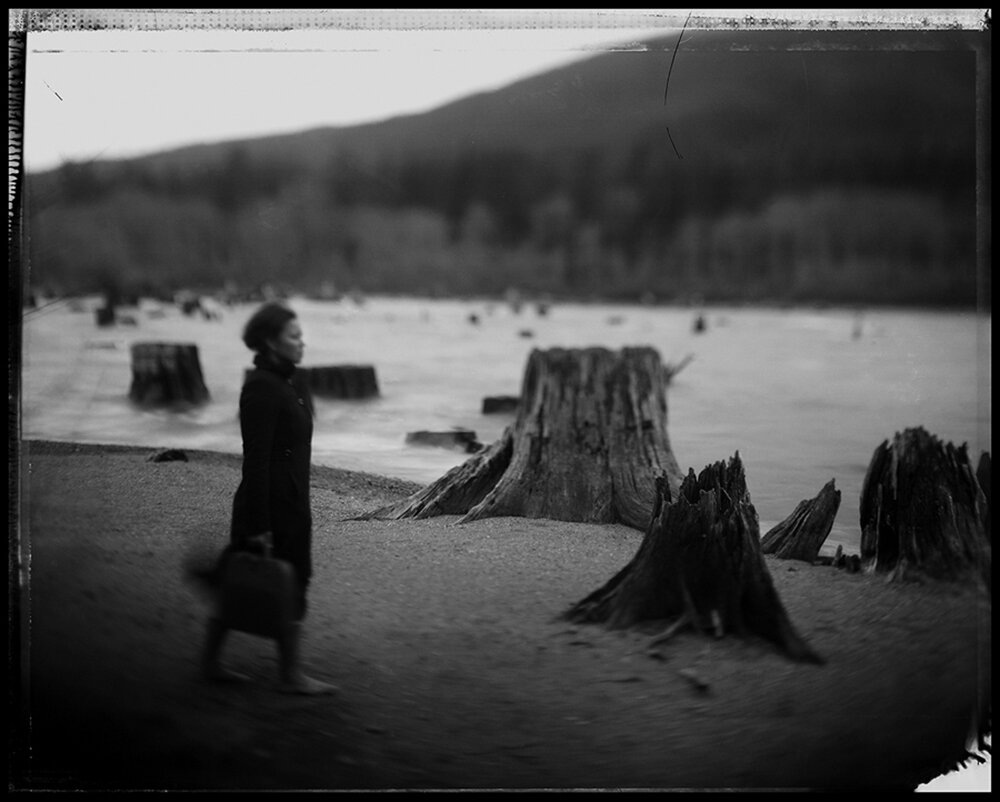
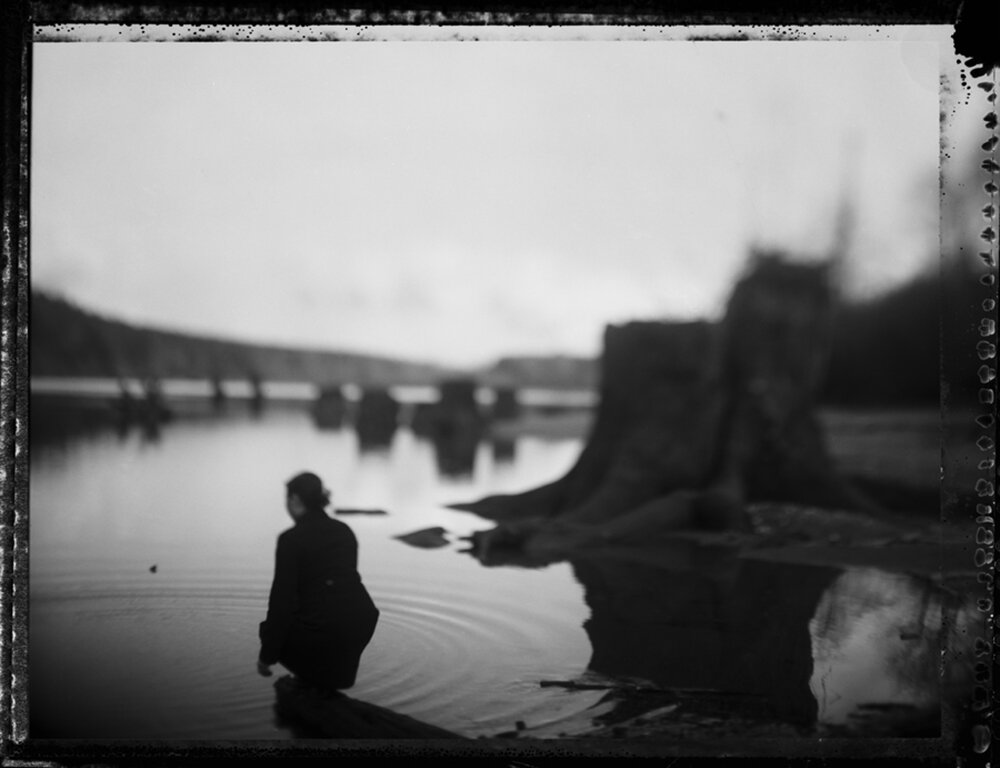
The heat, the fire, the sun — generator of photosynthesis, necessary for life, is so powerful as to be destructive. Water—genesis of life and necessary for survival, has a power both restorative and destructive. The attraction between these two bodies of work is elemental.
Photography translates to “drawing with light”, and in Kei Ito’s Sungazing the artist uses the pure light of the sun to create these cameraless images, directly exposing each sheet of photographic paper for the length of a single breath, both intake and release. Ito reinterprets his grandfather as witness to that terrible day in Hiroshima in 1945 through creating images that echo the nuclear shadows of human figures captured by the destructive light of the thermal radiation from the atomic bomb. Generational pain and loss is felt through the timing of breath repeated 108 times, a number with ritual significance in Japan, representing the full range of negative emotions a person may possess.
By contrast, when I first went to Rattlesnake Lake it smelled of summer and promised happy memories. When I returned in the winter I found a mud puddle and an hundred enormous stumps. Once an indigenous site, the area was deforested and a town built, later destroyed by flooding, and today is an overflow reservoir of drinking water for the city of Seattle. In Rattlesnake Lake an embodiment of spirit is imagined as a lone figure moving through a place of layered, untold histories. The series is photographed with a 4x5 field camera reminiscent of those used for 19th century Western geological surveys by European settlers. A bucket of lake water is collected to rinse the photographic film; dirt and leaves rub together and onto the film, leaving artifacts behind and tearing small pieces of silver away—a conversation between place and image.
The intertwined elements of fire and water shift and transform once again in the videos paired here. The rippling surface of sunlight reflected in water suggests a peaceful moment in Sungazing: Thirst, but speaks to consequences of a human-created disaster, bodies desperately rushing to the river seeking refuge and longing to stave an unquenchable thirst. The sun punishes. Rattlesnake Lake, on the other hand, is a source of drinking water. In Drowning, Drawing a submerged boat is drawn forth under an overcast sky from a devastated landscape. When it reaches the surface, the clouds break; the sun welcomes.
The human histories embedded in our landscapes are uneasy and unresolved. These two bodies of explore the seeming dualities of fire and water and destruction and restoration and invite us work invite us—through the poetic metaphors of optical and physical processes —into a timeless experience of place.
Tomiko Jones
Visiting Artist and Curator-in-Residence
Arts at CIIS